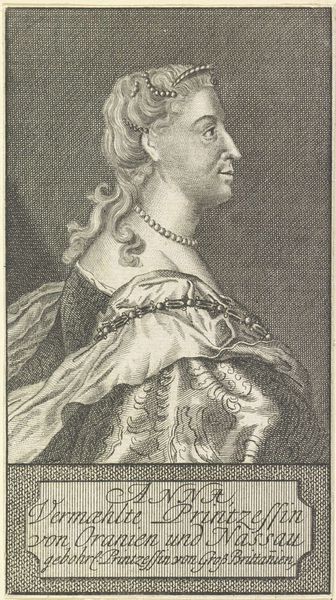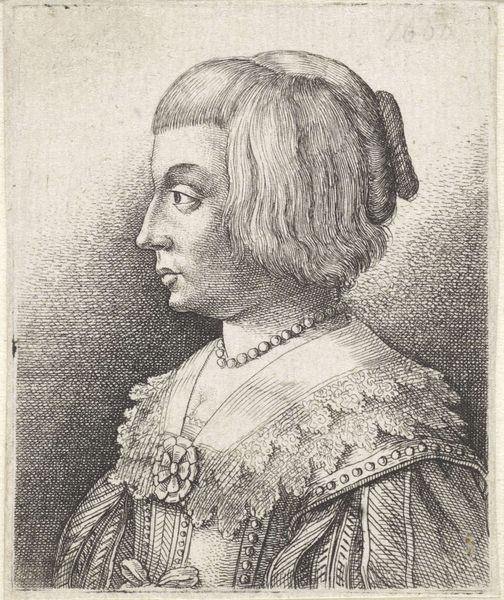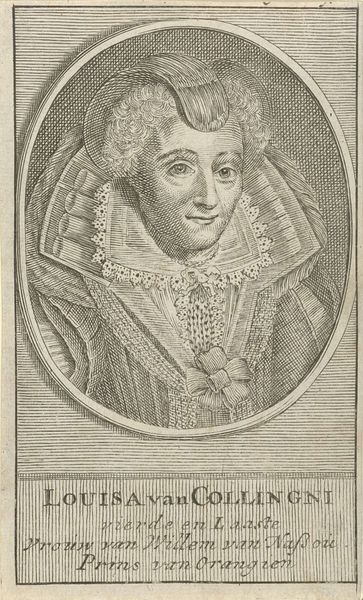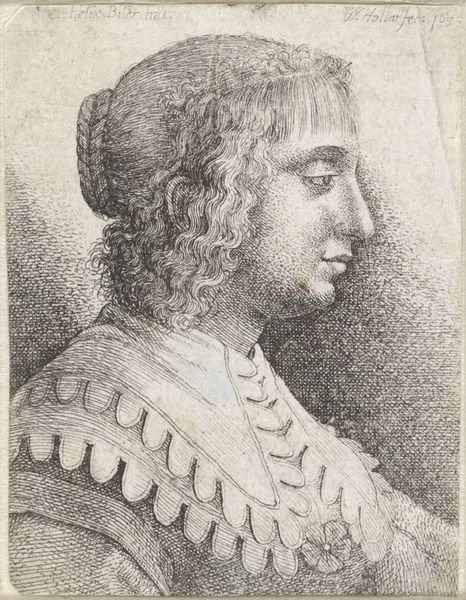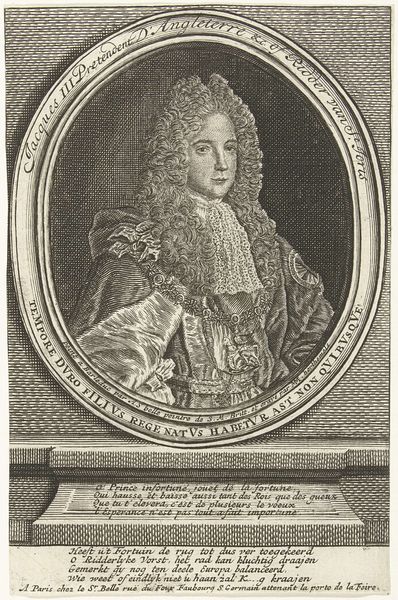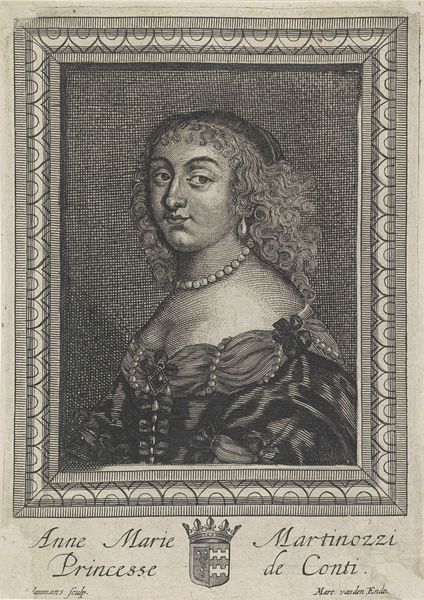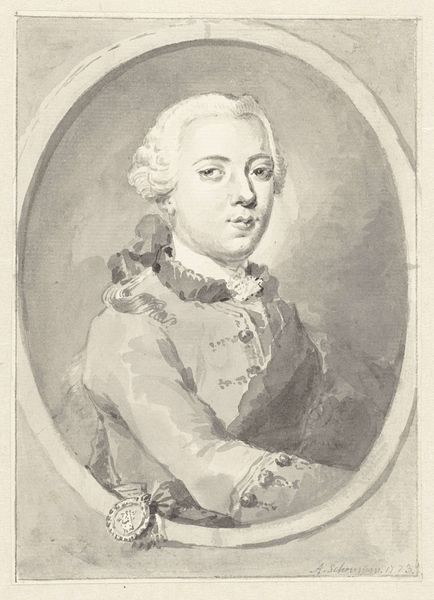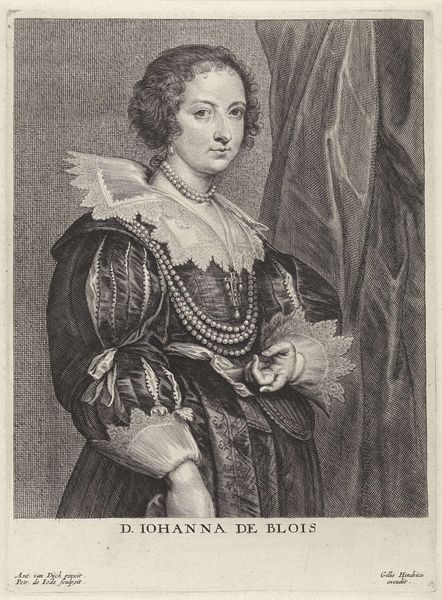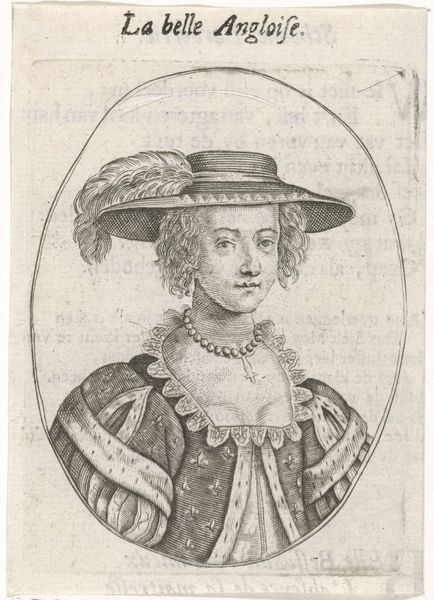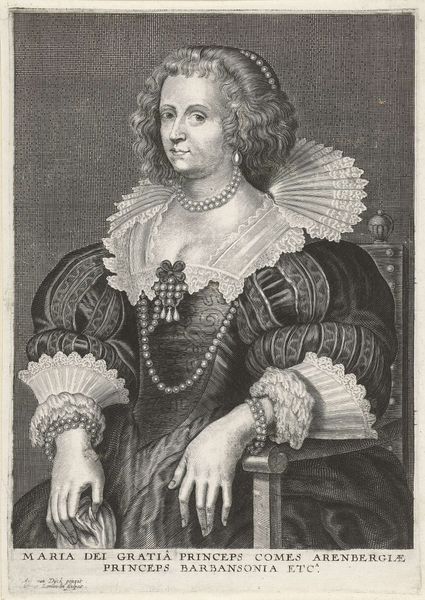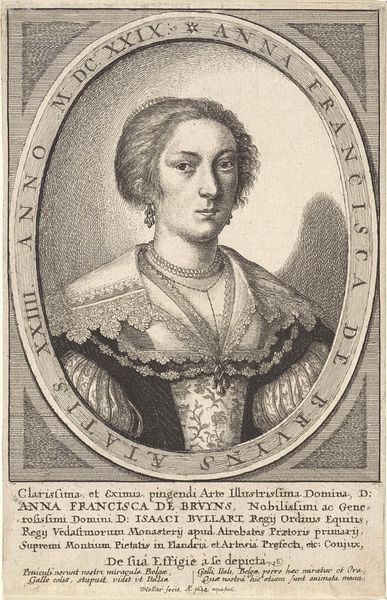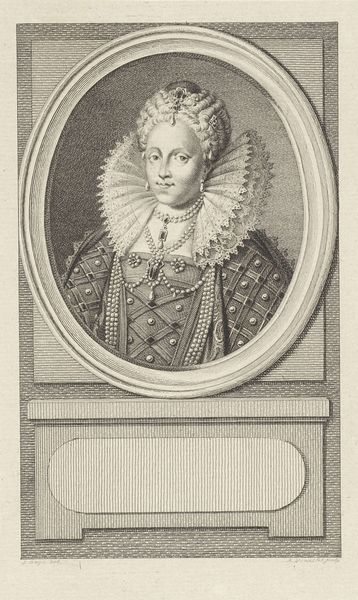
Dimensions: height 114 mm, width 61 mm
Copyright: Rijks Museum: Open Domain
Cornelis van Noorde made this print of German Emperor Joseph II using etching, a printmaking technique, sometime in the late 18th century. Though small in scale, prints like this one played a big role in circulating images and ideas in Europe at the time. Joseph II ruled the Holy Roman Empire during a period of significant social change and political upheaval. He's known as an "enlightened despot," meaning that while he held absolute power, he also embraced some of the progressive ideas of the Enlightenment. Van Noorde’s print would have been distributed widely, shaping public perception of Joseph II. The way he’s dressed, the style of his wig, and the medal he wears, all send signals about his status and authority. To understand this image more deeply, we might look into the history of printmaking, the politics of the Holy Roman Empire, and the visual culture of the late 1700s. Understanding its social and institutional context helps us appreciate how this small print contributed to the bigger picture of its time.
Comments
No comments
Be the first to comment and join the conversation on the ultimate creative platform.
